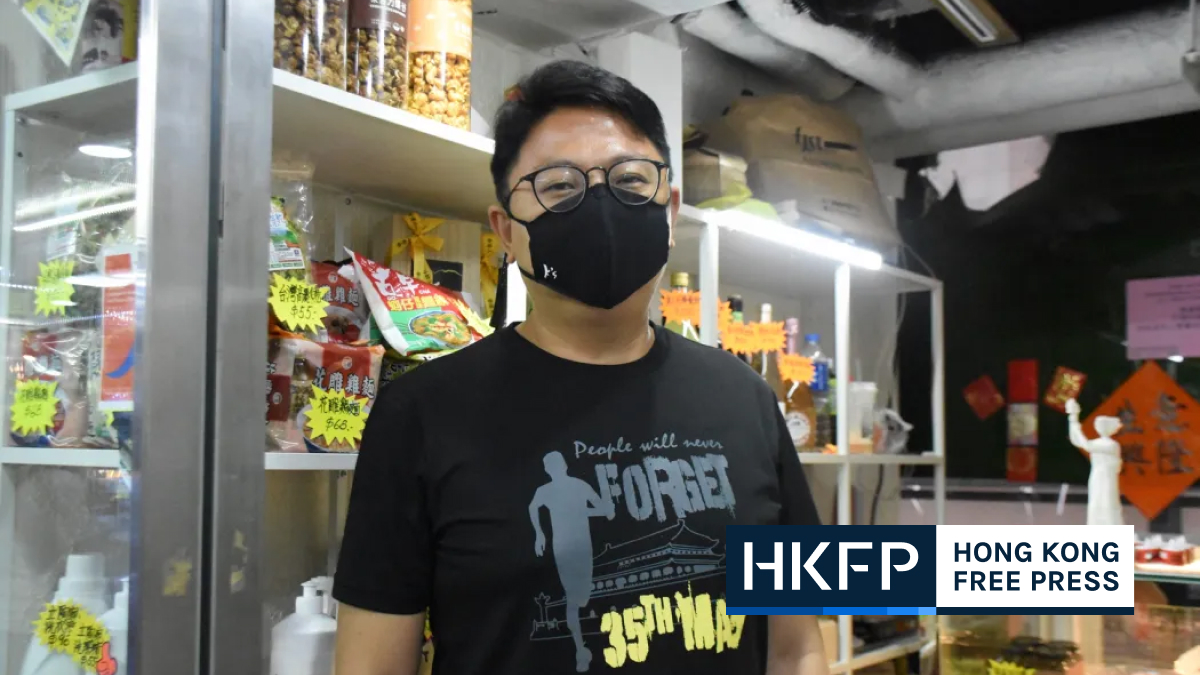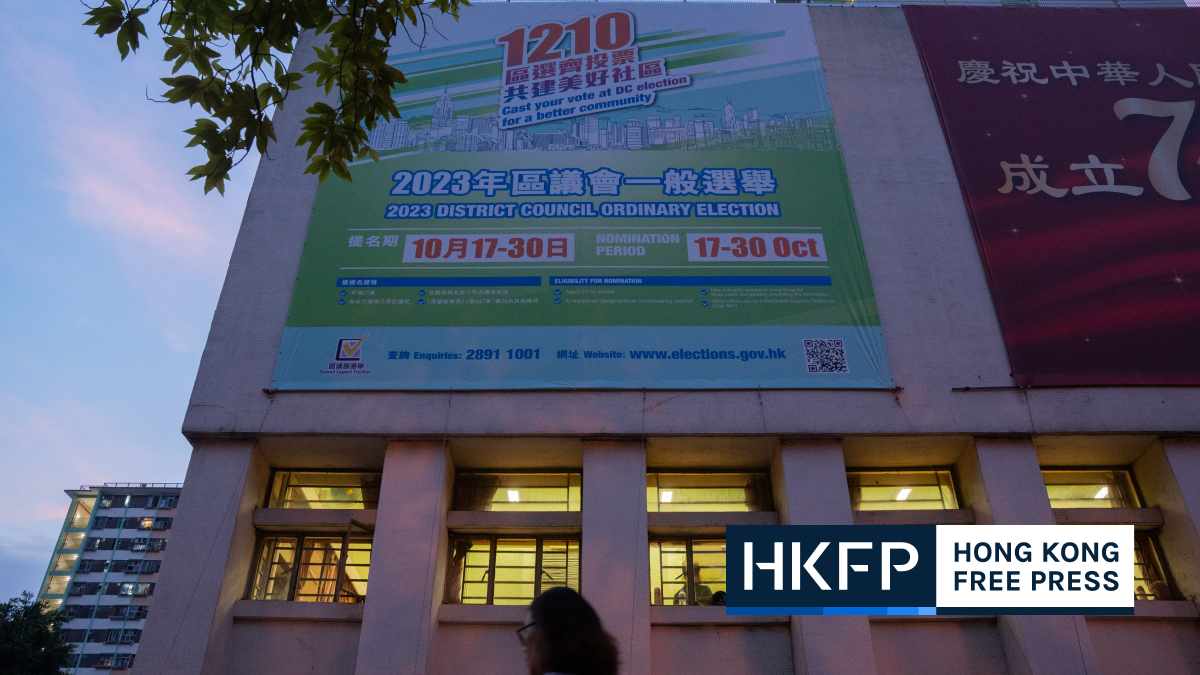Green groups have called on the government’s only wood processing plant to step up recycling operations and improve transparency after only 15 per cent of tree waste collected in the wake of Super Typhoon Saola was deemed suitable for recycling.

Saola triggered the Hong Kong Observatory to issue its highest storm signal on September 1 for the first time since Super Typhoon Mangkhut hit Hong Kong in September 2018.
Responding to enquiries from HKFP, a spokesperson for the Development Bureau said the government had received 3,700 reports of fallen or broken trees after Saola. The resulting debris was sent to temporary tree waste collection areas in the Kai Tak Development Area, South East New Territories Landfill, West New Territories Landfill, and North East New Territories Landfill, and garden waste recycling plant Y Park, the bureau said.

According to the Environmental Protection Department, the amount of tree waste generated was about 1,800 tonnes, most of which was twigs, small branches, and leaves.
The department estimated that about 270 tonnes of the tree waste – 15 per cent – could be recycled and would be delivered to Y Park for processing.
“Y Park is equipped with different processing equipment, such as wood crushers, wood cutting machines, etc., which can convert suitable fallen trees into different useful materials,” the Environmental Protection Department said in an emailed response to HKFP.
The remaining 1,530 tonnes would be sent to the city’s landfills, a department spokesperson confirmed by phone on Wednesday, after repeated enquiries on the waste deemed unsuitable for recycling would be handled.

Y Park was set up in June 2021 to “rachet up the scale of yard waste recycling and diversify the types of recyclable products,” according to it’s website. The government facility “can transform suitable yard waste into various useful materials such as wood boards, wood beams, wood chips and sawdust.”
After Mangkhut in 2018, green groups and scholars criticised the government for disposing of 20,480 tonnes of tree waste in the West New Territories Landfill without conducting any resource classification or seeing if it could have been recycled.
Prepared but limited
In a reply to HKFP, green group Friends of the Earth said that while the government was “more prepared” than it had been when Mangkhut hit Hong Kong, recycling efforts still had a long way to go.
Citing government figures over the past 10 years, the group said less than 3 per cent of the city’s yard waste had been recycled – some 2,000 tonnes out of 60,000 to 70,000 tonnes per year.
Caroline Law, board governor at Friends of the Earth, said Y Park had limited functionality, as it only accepted logs. Other garden waste, such as grass, leaves, and branches, must be sent to landfills for disposal, Law said, adding that most yard waste collected during daily maintenance of green spaces also came in the form of leaves and branches.
“There’s no incentive for them to change that,” Law told HKFP in Cantonese.

Environmental NGO The Green Earth suggested the government make use of organic resources recovery centre O Park1, which the green group said was not operating at full capacity. Citing government data, it said the facility could process 200 tonnes of material daily, but was handling an average of 135 tonnes per day, as of this June.
Law added that large quantities of organic matter would be needed to plant trees and build green infrastructure in the near future as the city moved towards greener development.
“We should make good use of government land for temporary storage of wood chips and yard waste, which can be left to decompose, then used for new town development or other green infrastructure projects,” Law said.

In 2017, Hong Kong vowed to cut carbon emissions by 26 to 36 per cent from 2005 levels by 2030, and in 2020, then-leader Carrie Lam announced plans to become carbon-neutral by 2050.
Top officials have vowed that mega-development projects under the Northern Metropolis initiative and artificial islands off Lantau will meet sustainability targets. A recent study found that parts of the Northern Metropolis could reach temperatures considered dangerous to human survival by the end of the century.
Transparency lacking
Friends of the Earth called on authorities to “openly and honestly” release detailed figures on Y Park’s operations: “Citizens should have the right to know how much waste was actually screened and sent to Y Park for disposal.”
Law, who holds a PhD in urban greening from the University of Hong Kong, said Y Park, as the only garden waste recycling facility in the city, should “improve transparency and make public the amount of yard waste processed and its output of useful materials… every month.”

Y Park’s website said its daily handling capacity, which began at 30 tonnes in its first year of operation, would gradually increase to 60 tonnes. But it has not regularly released figures on how much waste it handles.
Law also said that people should know whether the facility was indeed successful at achieving a circular economy – a system that produces little to no waste. If that was not the case, it should evaluate the reasons for the lack of demand, she added.
Support HKFP | Policies & Ethics | Error/typo? | Contact Us | Newsletter | Transparency & Annual Report | Apps
Help safeguard press freedom & keep HKFP free for all readers by supporting our team

LATEST FROM HKFP
HKFP has an impartial stance, transparent funding, and balanced coverage guided by an Ethics Code and Corrections Policy.
Support press freedom & help us surpass 1,000 monthly Patrons: 100% independent, governed by an ethics code & not-for-profit.








